Contents
- 1 You’re Not Missing – Your Mouse Is
- 2 Why Ultralight Mice Dominate Competitive FPS
- 3 What to Look for in an Ultralight FPS Mouse (2025)
- 4 Quick Picks: Best Ultralight Gaming Mice for Competitive FPS Players (2025)
- 5 Logitech G Pro X Superlight 2
- 6 Razer DeathAdder V3
- 7 Razer Viper V2 Pro
- 8 Pulsar Xlite V4 Wireless
- 9 Ultralight vs Traditional Gaming Mice – Should You Switch?
You’re Not Missing – Your Mouse Is
You flick. You click. You pre-aim like it’s muscle memory.
Still – your shots aren’t landing. You feel off. Behind. Slow.
It’s the boat anchor you call a mouse
In combat sports, heavyweight is king.
But in competitive FPS – lightweight is the undisputed champion.
In 2025, every millisecond matters. Ultralight gaming mice are no longer a trend – they’re the meta. Designed for precision, speed, and control, these featherweight tools have redefined how top-tier FPS players aim, flick, and dominate.
Whether you play CS2, Valorant, or Apex – the right mouse changes everything. Less weight, more control. Better sensor, more consistency. No fatigue, no excuses.
Below is our definitive guide to the best ultralight gaming mice for competitive FPS play in 2025.
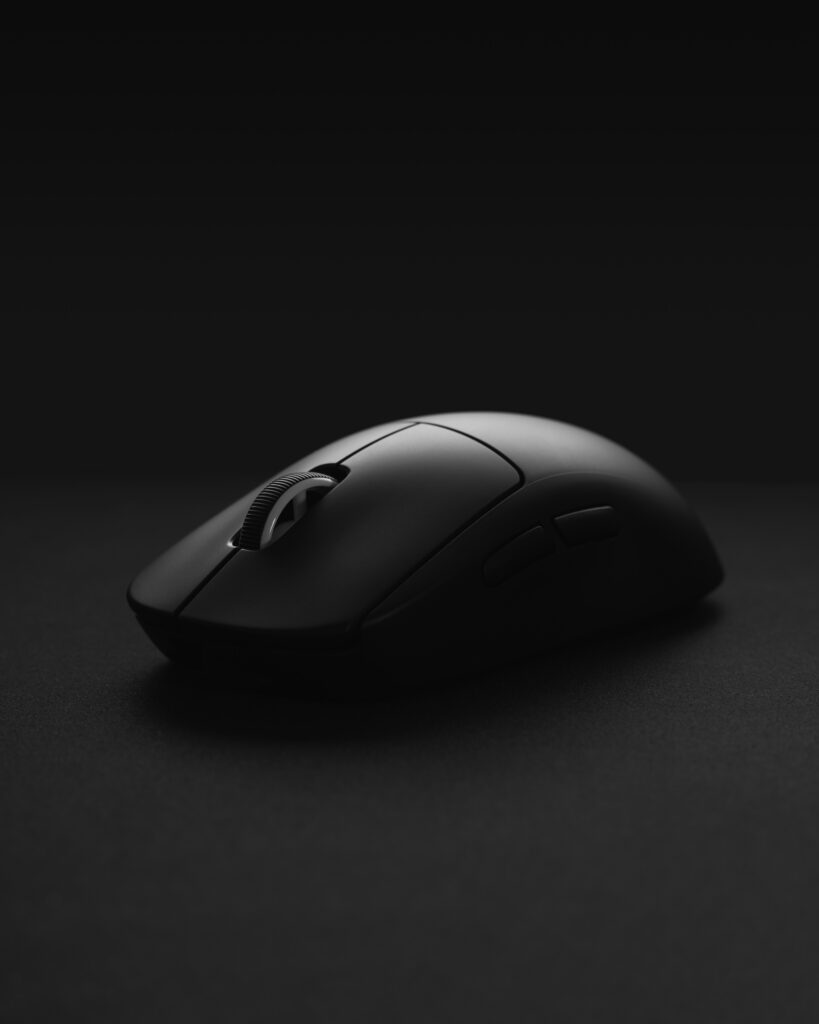
Why Ultralight Mice Dominate Competitive FPS
In competitive FPS, speed isn’t just an advantage – it’s survival. Whether you’re clearing angles in CS2 or micro-adjusting mid-fight in Valorant, every pixel, every flick, every millisecond counts.
And when milliseconds matter, weight matters.
Traditional gaming mice – packed with weights, side buttons and bulky designs — were built for general use. But in 2025, ultralight mice are engineered for one thing: FPS games.
Here’s why ultralight gaming mice are meta in FPS right now:
- Faster Target Acquisition – Less mass = less inertia. That means faster flicks and quicker corrections.
- Improved Micro-adjustments – Low-sens players need precision. Ultralight mice let you correct aim without overflicking or fighting drag.
- Reduced Hand Fatigue – In long ranked sessions or tournaments, fatigue kills performance. Ultralights keep your hand fresh and reactive.
- Optimal for Claw & Fingertip Grips – These grips dominate in pro play – and they shine with featherweight mice.
- Modern Sensors, Zero Compromise – You’re not sacrificing tracking. Today’s ultralights use top-tier sensors like Pixart 3395, flawless at high speeds.
Still using a 3.5 oz (100g) brick? That’s like showing up to a pistol round in full plate armor.
What to Look for in an Ultralight FPS Mouse (2025)
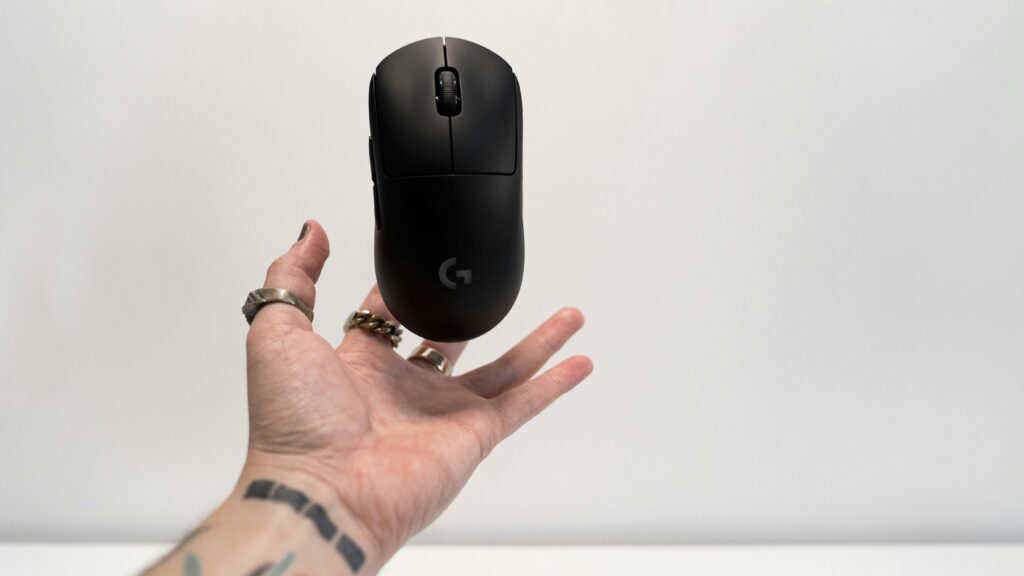
Not all ”lightweight” mice are created equal.
Just because a mouse weighs under 2 oz doesn’t mean it’s built for fast paced FPS games.
Here’s what separates the silver elite grinders from the aim gods:
Sensor Matters — and PixArt Still Reigns
No matter how light or fancy a mouse looks, it’s useless without a flawless sensor. In FPS games where pixel-perfect aim matters, a bad sensor means inconsistency, spin-outs, and frustrating misses. Top-tier ultralight gaming mice now ship with sensors that track precisely at high speeds with zero smoothing or acceleration.
- Look for sensors like PixArt 3395, 3389, or Hero 25K
- Flawless tracking at high speeds
- Zero smoothing, no acceleration, perfect 1:1 input
Pro tip: A $30 mouse with RGB and holes doesn’t mean it tracks well. Sensor > cosmetics.
Weight Class — Lighter Means Precision
The defining feature of any ultralight gaming mouse is – no surprise – the weight. The lighter the mouse, the easier it is to flick, adjust, and reposition during fast-paced FPS games. Especially for low-sensitivity players, lighter mice reduce fatigue and improve long-term precision.
- < 2 oz (≈ 55g) is ideal for fingertip and claw grippers
- Avoid anything over 2.8 oz (≈ 80g) – we’re entering tank territory
- Anything over 3 oz (≈85g) feels sluggish by 2025 standards
If it feels like dragging a dead rat across your pad – ditch it.
Shape and Grip Style
A mouse can have perfect specs, but if the shape doesn’t match your grip – it’s game over. Most ultralight gaming mice are designed with claw or fingertip grips in mind, which dominate in pro-level play. The right shape lets your hand stay relaxed and reactive
- Claw Grip? Look for medium hump, narrow rear
- Fingertip? Low-profile, flat slope, short shell
- Palm Grip? You’re in the wrong article, my friend.
No but seriously – if you’re still palming in competitive FPS games, consider switching grips.
It’s awkward at first, but the boost in reaction time and micro-adjust control is worth it.
Most pro FPS players don’t palm – and that’s not a coincidence.
Polling Rate and Latency
The polling rate defines how often your mouse updates its position to your PC. Higher rates mean smoother input and lower latency. Most ultralight FPS mice today offer 1000Hz, but premium models now go as high as 4000Hz — ideal for high refresh rate monitors.
- Minimum: 1000Hz
- Bonus: 4KHz (4000Hz) if you’re on a high refresh display
- Watch for wireless delay in budget options – always check reviews
Feet and Glide – The Unsung Hero
Mouse feet, or skates, don’t get the spotlight – but they make a massive difference. On ultralight gaming mice, high-quality PTFE or glass skates reduce friction and allow for effortless movement. Especially on cloth pads, the right feet feel like your mouse is floating.
- Look for PTFE feet (pure, not mixed)
- Rounded edges = smoother glide
- Some high-end mice include glass feet for near-frictionless movement
Wired vs Wireless
Once upon a time, wireless meant lag. That’s no longer the case. Modern ultralight wireless mice offer near-zero latency, long battery life, and even better weight distribution. Just make sure it’s using a high-end wireless system – not budget Bluetooth.
- Modern wireless = zero lag (if done right)
- Watch battery life: 70+ hrs preferred
- Bonus: USB-C + low-latency dongle (like Razer HyperSpeed / Logitech Lightspeed)
Your aim is only as good as what you see — and how clearly you see it.
Pairing your ultralight gaming mouse with the right gaming monitor can be the difference between a whiff and a wallbang.
High refresh rate, low latency, and fast response time aren’t just specs — they’re weapons.
And if you’re gaming for hours, don’t sleep on blue light glasses.
Eye strain kills focus. These lenses help you lock in longer and stay dialed.
Bonus tip — if you’re grinding late into the night, protect your recovery too.
Our melatonin guide for gamers can help you reset your sleep schedule and come back sharper tomorrow.
Quick Picks: Best Ultralight Gaming Mice for Competitive FPS Players (2025)
Here’s our quick picks for our top-rated ultralight gaming mice for 2025. Whether you’re looking for the lightest build, the best sensor, or ambidextrous design – these picks deliver where it counts.
| Model | Weight | Handedness | Link |
|---|---|---|---|
| Razer DeathAdder V3 Pro | 2.2 oz (63g oz) | Right-handed | Check price |
| Razer Viper V2 Pro | 2.05 oz (58g) | Right-handed (ambidextrous shell) | Check price |
| Logitech G Pro X Superlight 2 | 2.12 oz (60g) | Right-handed (ambidextrous shell) | Check price |
| Pulsar Xlite v4 | 1.99 oz (58g) | Right-handed | Check price |
Logitech G Pro X Superlight 2
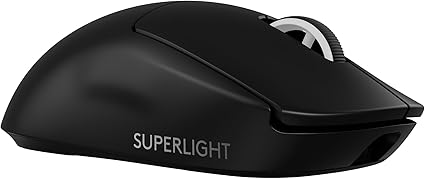
If there’s one mouse every FPS pro has touched, it’s this one. The Logitech G Pro X Superlight 2 isn’t flashy – it’s surgical. Trusted by CS2 and Valorant players and esport pros at the highest level, this mouse focuses on flawless execution: no fluff, no excuses. It may not be the lightest on the list, but its shape, weight balance, and latency are dialed in like no other.
First launched as a response to pro players demanding a no-nonsense, high-performance wireless option, the original G Pro Wireless quickly became a tournament staple. Logitech refined it further with the Superlight, and now the Superlight 2 brings upgrades where it matters – faster polling, better battery, and an even more optimized HERO 2 sensor.
Lightspeed wireless isn’t just marketing – it’s Logitech’s proprietary tech designed for <1ms latency, with stability you’d expect from a wired mouse. Add to that a perfectly balanced semi-ambidextrous shape and industry-leading build quality, and it’s easy to see why this mouse still holds the throne.
| Weight | 60g (2.12 oz) |
| Sensor | HERO 2 |
| Shape | Right handed (Semi-Ambidextrous) |
| Connection | Wireless (Lightspeed) |
| Battery life | Up to 95 hours |
| Polling rate | 1000Hz (8000Hz via update) |
If your aim is already solid, this mouse will push it further – and if it’s not, this is the safest bet to fix it.
What we like:
- Ultra-refined shape trusted by pro players worldwide
- Incredibly consistent sensor performance (HERO 2)
- Long battery life and low-latency wireless (Lightspeed)
- Great click feel and lightweight shell with no holes
- Compatible with Logitech’s 2000Hz polling update
- Logitech LIGHTFORCE hybrid switches for extra precision
What to consider:
- Slightly heavier than some newer ultralight competitors
- No side buttons on right side (not true ambidextrous)
- Lacks RGB (if that matters to you)
Razer DeathAdder V3
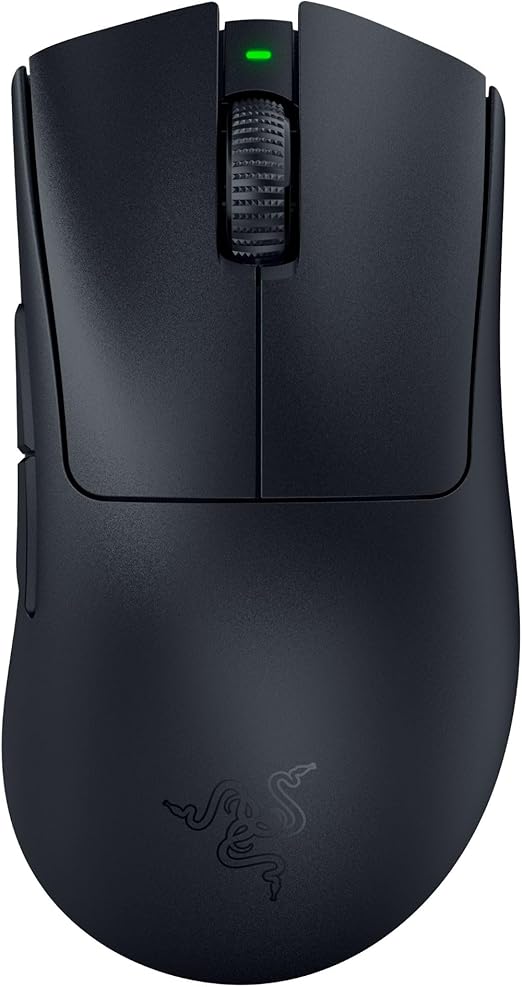
First released nearly two decades ago, the original DeathAdder became an instant classic – known for its curvy, right-handed shape and comfortable grip. It was the go-to for ergonomic lovers in a time dominated by bulky, button-heavy mice. Since then, Razer has refined it across multiple generations, culminating in the V3: lighter, faster, and laser-focused on competitive play.
What sets the DeathAdder V3 apart in the ultralight gaming mouse space is that it doesn’t try to be everything for everyone. It’s not ambidextrous, and it’s not trying to break weight records. Instead, it delivers a tried-and-true ergonomic form with modern internals — Focus Pro 30K sensor, HyperSpeed wireless, and compatibility with Razer’s 4000Hz HyperPolling Dongle for players who want every possible edge.
It’s one of the few ergonomic ultralights that doesn’t feel like a compromise.
| Weight | 2.08 oz (63g) |
| Sensor | Focus Pro 30K |
| Shape | Ergonomic (Right-handed) |
| Connection | Wireless (Razer HyperSpeed) |
| Battery life | Up to 90 hours |
| Polling rate | 1000Hz (4000Hz with dongle) |
If you want a ultralight gaming mouse with a ergonomic feel – Razer DeathAdder is a safe bet.
What we like:
- Iconic ergonomic shape with excellent support
- Super low-latency wireless via HyperSpeed + optional 4000Hz
- Focus Pro 30K sensor is elite-level precise
- Excellent click feel and sturdy build
- Ideal for hybrid claw/palm grip users
What to consider:
- Not ambidextrous – right-handed only
- Slightly larger shell than typical ultralights
- Best suited for medium to large hands
- No RGB (again, might matter to some)
Razer Viper V2 Pro
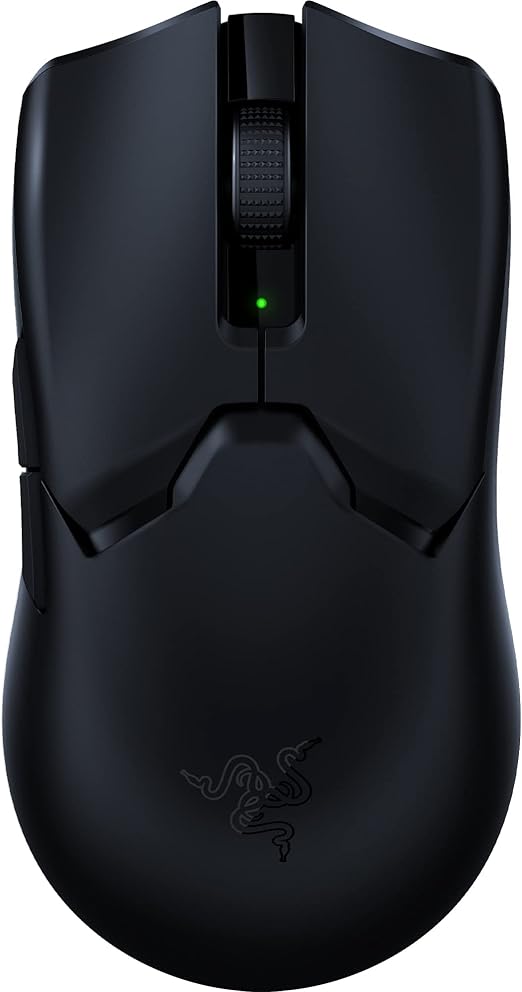
The Viper line has always been Razer’s answer to competitive FPS – and the V2 Pro version dials everything in for pure competetive/esports dominance. It drops the RGB, side grips, and even a few grams compared to the original Viper Ultimate, all in pursuit of lower weight, better balance, and fewer distractions.
The Viper V2 Pro is built around speed and control — especially for claw and fingertip players. It uses the same Focus Pro 30K sensor found in the DeathAdder V3, but packs it into a much flatter, ambidextrous shell. If you want wireless performance, ultralight weight, and elite-level flick control in a mouse that disappears in your hand, this is it.
First released in 2022, the V2 Pro became an instant favorite among pro Valorant and CS players thanks to its ultra-consistent sensor, featherlight 58g design, and HyperSpeed wireless connection. The optional 4KHz polling rate unlocks even snappier response times, making it one of the fastest wireless mice on the market.
While it shares internals with the DeathAdder V3, the flat shape and lower profile make it feel like a completely different tool – leaner, tighter, and better suited for aggressive aimers.
| Weight | 58g (2.05 oz) |
| Sensor | Focus Pro 30K |
| Shape | Right handed (Semi-Ambidextrous) |
| Connection | Wireless (HyperSpeed) |
| Battery life | Up to 90 hours |
| Polling rate | 1000Hz (4000Hz with dongle) |
What we like:
- One of the lightest wireless mice with top-tier internals
- Focus Pro 30K sensor delivers flawless accuracy
- Flat, low-profile shape ideal for claw and fingertip players
- HyperPolling support (4000Hz) with separate dongle
- Clean design, no unnecessary features
What to consider:
- No side grips or textured surface – may feel slippery to some
- Right-side buttons removed (not ambidextrous in practice)
- Requires separate dongle for 4KHz polling
- Not ideal for palm grip users
Pulsar Xlite V4 Wireless
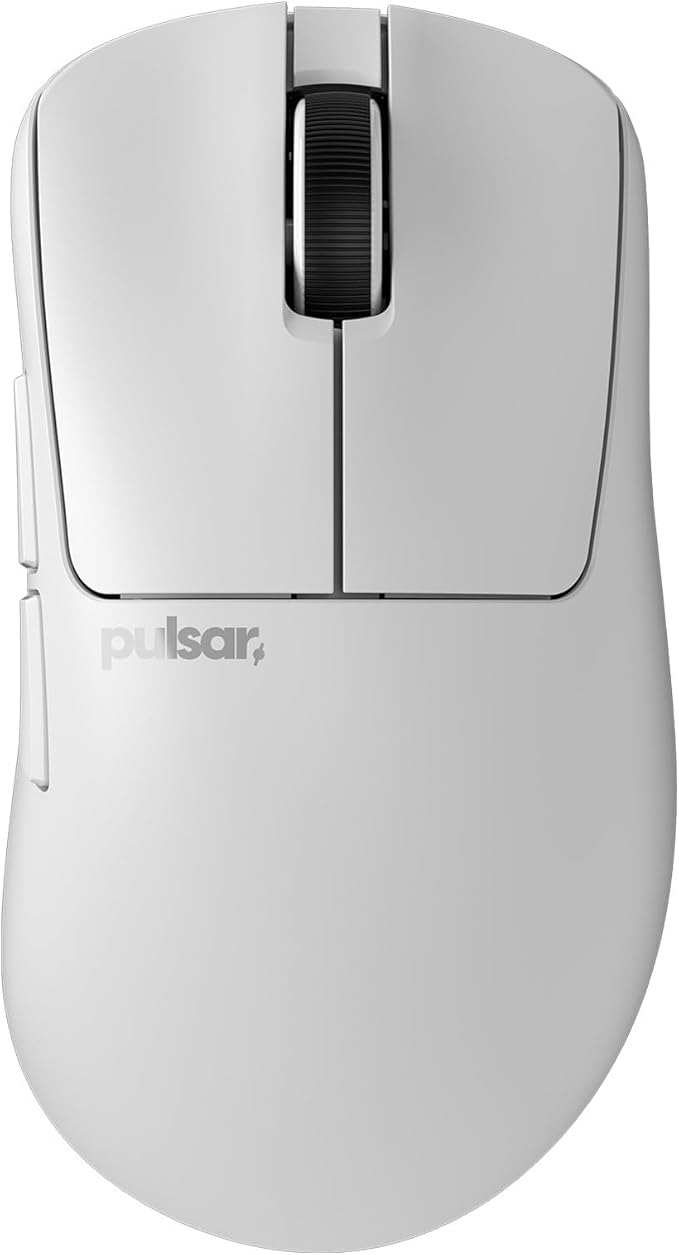
Pulsar has gone from niche startup to serious contender in the ultralight scene – and the Xlite V4 Wireless proves why. It combines a timeless ergonomic shape with next-gen internals: optical switches, a brand-new XS-1 sensor, and support for up to 8000Hz polling.
Weighing just 58g (2.04 oz), it somehow packs a full-sized shell without feeling bulky. The shape is reminiscent of the DeathAdder, but more controlled, more streamlined – and much lighter. If you want a high-performance ergonomic mouse that doesn’t sacrifice speed for comfort, this is it.
This is Pulsar’s most advanced model yet. The honeycomb design is gone, replaced by a solid shell that feels premium and durable. Clicks are snappy thanks to optical switches, and the wireless connection is decent at 2.4GHz.
And the kicker? It’s 8K-ready. If you’re running a 360Hz or higher monitor and want your input to match, this mouse is built to deliver.
| Weight | 58g (2.04 oz) |
| Sensor | Pulsar XS-1 |
| Shape | Ergonomic (Right-handed) |
| Connection | Wireless (2.4GHz) |
| Battery life | Up to 100 hours |
| Polling rate | 1000Hz (8000Hz supported) |
If you have large hands and want a ultralight gaming mouse – this one is for you.
What we like:
- Ergonomic shape that actually stays ultralight
- Clean, solid shell – no holes, no flex
- Optical switches feel crisp and durable
- 8K polling-ready for future-proofed speed
- Excellent value compared to big-brand rivals
What to consider:
- Only available in right-handed layout
- Larger shape may not suit fingertip players
- 8K polling requires separate dongle
- Limited availability depending on region
Ultralight vs Traditional Gaming Mice – Should You Switch?
Not long ago, gaming mice were built like tanks. Weighted scroll wheels, 10+ buttons, rubber grips, braided cables, and even removable weight systems. They looked cool – but felt like dragging a brick across your mouse pad.
In 2025, that era is over.
Traditional gaming mice often weigh 3.2–4.6 oz (90-130g), making fast flicks, micro-corrections, and long sessions a chore. They were designed for general use – not competitive FPS precision.
Ultralight gaming mice, on the other hand, are built for speed, control, and endurance. No fluff, no gimmicks – just refined shape, flawless sensors, and a shell so light it barely registers in your hand.
When Traditional Mice Fall Short:
- You play low sensitivity and struggle with fast crosshair movement
- You fatigue during long ranked sessions
- Your mouse feels sluggish or overshoots when flicking
- You notice input lag or spin-outs in fast-paced games
When Ultralights Make Sense:
- You want tighter aim and faster muscle memory feedback
- You main tactical FPS like CS2, Valorant, Apex, or R6
- You use claw or fingertip grip
- You’re already pushing 240–360Hz on your monitor and want your mouse to keep up
A lighter mouse won’t make you m0NESY overnight – but it removes one more thing holding you back
If your current mouse is heavier than 80g, you owe it to yourself to try something lighter. Just once. Trust us – there’s no going back.
We hope this guide helped you cut through the hype and find the right ultralight gaming mouse for your setup.
Choosing the best tools for competitive play doesn’t have to be overwhelming.
You don’t need an aim trainer obsession — just the right gear that lets your skill shine.
And if you’re looking to upgrade more than just your aim — don’t miss our GPU guide for 2025.
The right graphics card can take your frames, visuals, and overall experience to the next level.
